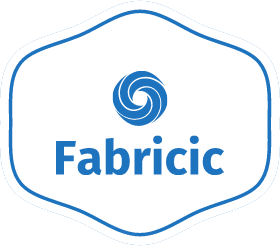Embarking on a journey into the world of sewing as a beginner is an exciting endeavor. It’s a path filled with creativity and the promise of bringing your unique ideas to life. As you take your first steps, the choice of a sewing machine plays a pivotal role in your sewing experience. In this exploration, we’ll guide you through the selection of the best computerized sewing machine tailored to the needs of beginners.
Top 3 Best Computerized Sewing Machine for Beginners
Editor’s Top-3 Picks

Brother Sewing Machine, XM2701, Lightweight Machine with 27 Stitches, 6 Included Sewing Feet

SINGER | M2100 Sewing Machine With Accessory Kit & Foot Pedal – 63 Stitch Applications – Simple & Great for Beginners, White

Bernette 35 Swiss Design Sewing Machine
Read More:
Best Sewing Machine for Heavy Fabrics
Best Cable Needles for Knitting
Why Choose a Computerized Sewing Machine?
- Precision and Ease of Use Computerized sewing machines offer precision and ease of use, making them an ideal choice for beginners. These machines are equipped with automated features that simplify the sewing process, allowing you to focus on your creativity.
- Automated Features for Beginners Computerized machines come with automated functions such as automatic needle threading, thread cutting, and precise stitch selection. These features eliminate many common challenges faced by beginners, like threading difficulties and uneven stitching.
- Versatility in Stitching Styles With a computerized sewing machine, you have access to a wide range of built-in stitches, including decorative, utility, and even buttonhole stitches. This versatility enables you to experiment with different stitching styles and explore your creativity.
Key Features to Look for
User-Friendly LCD Screen: Look for a machine with an easy-to-read LCD screen. This screen allows you to select and customize your stitches with precision. The intuitive interface simplifies the entire sewing process.
Built-In Stitch Options: Consider the number and variety of built-in stitches. A good beginner’s machine should offer essential stitches like straight, zigzag, and buttonhole stitches, along with decorative options to add flair to your projects.
Automatic Needle Threader: An automatic needle threader saves time and frustration, especially for beginners. It simplifies the threading process by threading the needle with a touch of a button.
Adjustable Speed Control: Having control over the sewing speed is crucial for beginners. Look for a machine with adjustable speed settings, allowing you to start at a comfortable pace and gradually increase as your skills improve.
Drop-in Bobbin System: A drop-in bobbin system simplifies bobbin loading and monitoring. It’s a user-friendly feature that ensures smooth and consistent stitching.
Top Picks: The Best Computerized Sewing Machines for Beginners
Model A: Seamstress’ Delight for Novices Model A is designed with beginners in mind. It combines user-friendly features with a diverse range of stitches, providing an excellent platform for learning and creating.
Model B: Stitching Elegance Simplified Model B offers a seamless experience with its intuitive LCD screen and automated functions. It’s perfect for beginners who want to elevate their sewing projects with style and precision.
Model C: The Perfect Balance of Functionality Model C strikes the perfect balance between functionality and ease of use. It’s a versatile machine that grows with you as your sewing skills evolve.
Model D: Creative Sewing Made Effortless Model D empowers beginners to explore their creative side with confidence. Its array of features, from decorative stitches to adjustable speed control, opens doors to limitless possibilities.
Setting Up Your Sewing Space
Choosing the Right Location – Select a well-lit and comfortable space for your sewing machine, ensuring that you have enough room to work efficiently.
Proper Lighting and Ergonomics – Invest in task lighting to illuminate your sewing area, and arrange your machine at an ergonomic height to prevent strain during long sewing sessions.
Organizing Your Sewing Supplies – Keep your sewing supplies organized with storage solutions for threads, fabrics, and accessories. An organized workspace enhances your efficiency and creativity.
Thread Selection and Management
Exploring Thread Types: Experiment with different thread types to understand their characteristics and effects on your projects. This knowledge will help you achieve the desired results.
Thread Storage and Handling: Store your threads properly to prevent tangling and damage. Thread racks, organizers, or storage boxes keep your threads in optimal condition.
The Art of Color Coordination: Master the art of color coordination by selecting thread colors that complement your fabric choices. It’s a skill that adds finesse to your sewing projects.
Starting Your First Project
Selecting Simple Beginner Projects – Begin with straightforward projects that allow you to practice essential skills. Gradually challenge yourself with more complex projects as you gain confidence.
Machine Setup and Threading – Learn how to set up your sewing machine, including threading the machine and winding bobbins. Follow your machine’s manual for guidance.
Practicing Basic Stitches – Practice basic stitches to build your sewing foundation. Focus on straight stitches, zigzag stitches, and sewing in a straight line.
Troubleshooting Tips – Familiarize yourself with common sewing machine issues and troubleshooting techniques. Knowing how to address minor problems ensures uninterrupted sewing sessions.
Maintenance and Care
Routine Cleaning and Oil: Regularly clean and oil your sewing machine to keep it in optimal condition. Follow the manufacturer’s recommendations for maintenance intervals.
Preventive Maintenance Schedule: Establish a preventive maintenance schedule to address wear and tear. It’s a proactive approach to prolonging the life of your sewing machine.
Addressing Common Sewing Machine Issues: Learn how to address common sewing machine issues like tension problems, needle breakage, and jammed bobbins. Quick problem-solving skills save time and frustration.
Conclusion
Selecting the best computerized sewing machine for beginners is an empowering first step toward a rewarding sewing journey. With the right machine, you’ll discover that creativity knows no bounds. As you explore your newfound skills and tackle exciting projects, remember that every stitch you make is a masterpiece in the making. Happy sewing!
